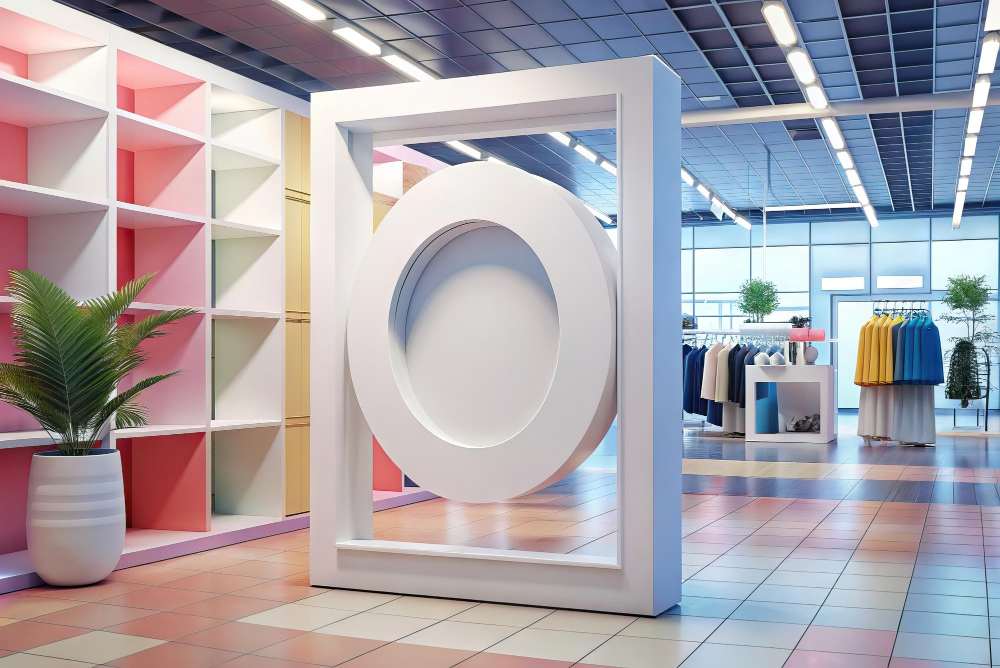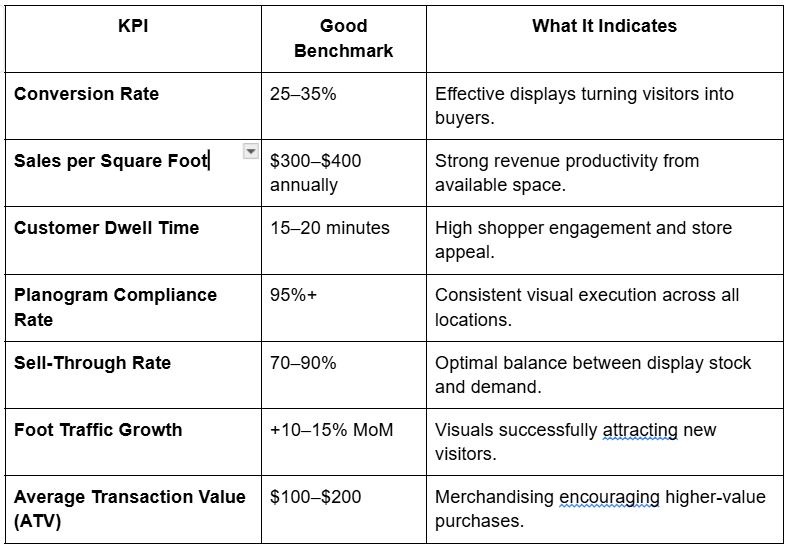Visual Merchandising KPIs: Measure What Drives Retail Performance
Track visual merchandising KPIs like sales per sq. ft, conversion rate & dwell time to turn creative displays into measurable retail performance.



Track visual merchandising KPIs like sales per sq. ft, conversion rate & dwell time to turn creative displays into measurable retail performance.

In retail, creativity gets people to look — but data tells you whether they buy. That’s where visual merchandising KPIs come in.
Beautiful store displays, premium product placements, and immersive lighting setups might grab attention, but without tracking how these efforts translate into sales, engagement, and conversions, they’re just decoration. Key Performance Indicators (KPIs) bridge that gap — turning visual appeal into measurable retail performance.
By monitoring the right KPIs, retailers can understand which displays drive purchases, which layouts increase dwell time, and where shoppers lose interest. In short, visual merchandising KPIs reveal whether your creative strategy is truly influencing customer behavior — or just filling space.
The first and most obvious indicator of visual merchandising success is sales.
But the key isn’t just how much you sell — it’s what, where, and why those sales happen.
Sales performance KPIs help retailers tie every shelf display, window setup, and product placement directly to revenue outcomes. These metrics highlight which visuals convert browsers into buyers and which displays fail to move the needle.
Here are the most critical ones to track:
You can’t sell to an empty store — and you can’t assume every visitor becomes a buyer. That’s why conversion and traffic KPIs are essential for measuring how effectively your visual merchandising turns curiosity into action.
These metrics go beyond aesthetics; they reveal how shoppers move, pause, and purchase within your store.
A display isn’t successful just because it looks beautiful — it’s successful when it sells beautifully. That’s where visual and display effectiveness KPIs come in. These metrics measure how well your creative execution drives engagement, visibility, and in-store action.
They tell you whether your displays are truly doing their job — stopping, inspiring, and converting.
A visually stunning display means little if the products it promotes aren’t in stock. That’s why inventory and stock KPIs are essential — they connect your visual merchandising strategy with supply chain reality.
These indicators ensure that what shoppers see is actually available to buy, keeping the shelf experience seamless and profitable.
Visual merchandising isn’t just about what shoppers see — it’s about how they feel when they see it.
That’s why customer experience KPIs focus on the emotional and behavioral impact of your displays. These metrics reveal whether your store experience is engaging, inspiring, and driving loyalty.
These KPIs give visual merchandisers a clear window into the shopper’s mind and heart. They turn aesthetics into actionable insights — showing how emotion, engagement, and experience drive real retail results.
Knowing what to measure is one thing — knowing what good looks like is another. Benchmarking helps retailers compare their visual merchandising performance against industry standards and set realistic goals for improvement.
Here’s what strong visual merchandising performance typically looks like in retail:

👉 Note: Benchmarks vary by category, season, and store type. For instance, luxury and lifestyle retailers often see higher transaction values but lower conversion rates, while convenience or FMCG stores focus on quick turnover and volume.
Tracking these benchmarks regularly helps teams spot strengths, address weak zones, and align creative strategies with measurable business outcomes.
KPIs are only powerful if they’re consistent, contextual, and actionable. The right tracking habits turn your data into a decision-making engine — helping you fine-tune visuals, layouts, and displays in real time.
Here’s how top-performing retailers do it:
Visual merchandising used to be judged by instinct — now, it’s measured by insight.
Every mannequin, endcap, or shelf display tells a story, but only data reveals whether that story sells.
By tracking the right KPIs, retailers bridge the gap between art and analytics — transforming store layouts from static visuals into living, measurable systems of performance.
Sales per square foot shows the return on your space. Conversion and dwell time show how customers engage. Compliance and stock KPIs ensure flawless execution. Together, these metrics give retailers the power to optimize, adapt, and grow — store after store.
In the end, great visual merchandising isn’t about making products look good. It’s about making every visual decision work harder.
Stay up to date with the latest video business news, strategies, and insights sent straight to your inbox!